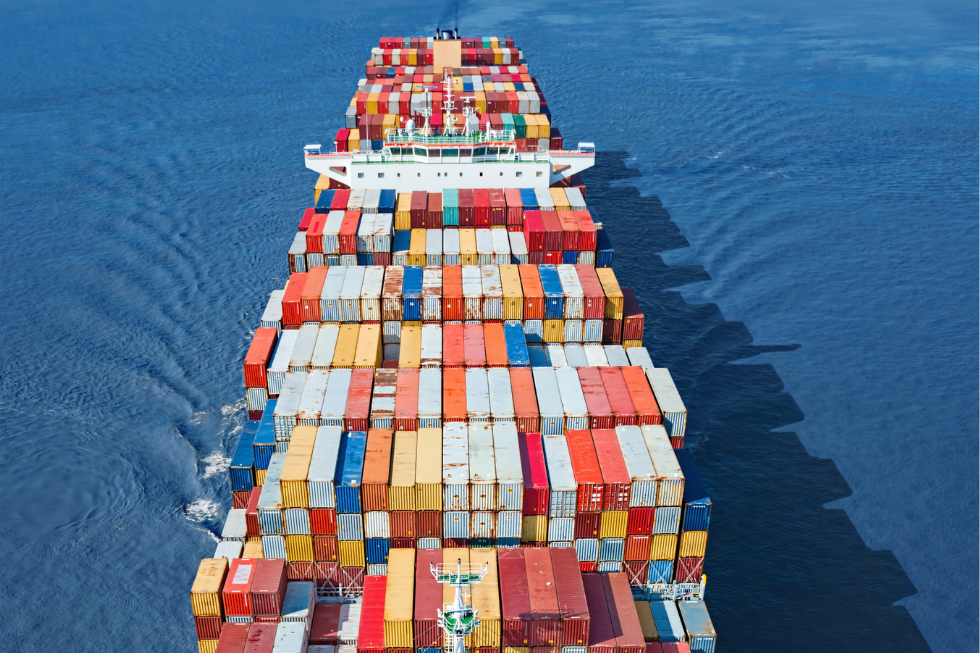This month:
- Spot rates fell 3.3% with no traditional peak season in sight.
- Rate softness expected through late 2025 due to new U.S. tariffs and Chinese vessel restrictions.
- Southeast Asia ports see higher loadings than China; tropical storms delay Chinese port operations by 2–3 days.
- Bookings continue to soften since July, with declines likely into Q4.
- Smaller cargo owners and low-value goods shippers face higher landed costs from new tariffs.
- Capacity utilization may drop to 85% on USEC and USWC routes.
- Potential late-September surge before China’s Golden Week shutdown, followed by a rapid decline.
- New tariffs: 25% on Indian imports, 50% on certain copper goods from China, plus Annex I country-specific rates.
Download the August 2025 Freight Market Update [PDF]
Market Conditions
The Transpacific container shipping market continues to show signs of weakness, with no evidence of a traditional peak season emerging. Spot rates remained mostly flat last week before declining again by 3.3%.
Forecasts indicate that rates will likely soften through late 2025, with added pressure from new U.S. tariffs and restrictions on Chinese vessels.
Meanwhile, Southeast Asian ports continue to report higher overall loadings than those in China. Tropical storms in China have caused port delays of two to three days.
📬 Stay Ahead of the Supply Chain Curve!
Want timely updates on freight rates, capacity shifts, and trade policy impacts? Subscribe to our monthly Freight Market Update mailing list and get expert insights delivered straight to your inbox — no fluff, just what logistics professionals need to know.
Booking Trends & Tariff Impacts
Since July, bookings have slowed, and carriers expect volume declines to persist through Q3 and possibly into Q4. This trend is driven by:
- Frontloading of seasonal freight earlier in the year.
- New U.S. tariffs (effective August 7) likely to further suppress demand, especially among:
- Smaller cargo owners
- Shippers of low-value goods
For many in these groups, higher tariffs make landed costs uneconomical, forcing reductions or halts in shipments.
Capacity Utilization & Carrier Strategy
Capacity utilization on Transpacific services is now at its lowest since April. According to LINERLYTICA:
- Utilization on both USEC and USWC routes may drop to 85% this week.
- Tariffs have already contributed to higher inflation and slower job growth, dampening demand expectations for H2 2025.
Carriers are using capacity management—mainly blank sailings—to try to stabilize rates. However, persistent macroeconomic uncertainty may limit their effectiveness.
Seasonal Outlook & Rate Volatility
Carriers are working to reintroduce suspended services and add extra loaders, but relief is limited in the short term. The early arrival of peak season makes it critical for shippers to book cargo 4–6 weeks in advance.Despite soft market conditions, U.S. importers will still require inventory for the holiday season. This could lead to:
- A short-lived rate and volume surge in late September before China’s Golden Week shutdowns.
- A temporary spot rate spike of two to three weeks, followed by a rapid decline.
Capacity cuts by carriers could amplify these fluctuations, creating both opportunities and risks for shippers.
Key Tariff Updates – President Trump’s Executive Order
- Shipments loaded before Aug. 7 and entered for consumption before Oct. 5 will retain a baseline 10% reciprocal tariff.
- Shipments loaded before Aug. 7 but entered on or after Oct. 5 will have a country-specific rate listed in Annex I.
- Shipments loaded on or after Aug. 7 will also have Annex I rates, with non-listed countries subject to a 10% reciprocal tariff.
- A new 25% tariff on Indian imports takes effect Aug. 27 in response to India’s purchase of Russian oil.
- A 50% tariff on semi-finished copper goods and copper-intensive components from China took effect Aug. 1.
Need help navigating these shifts or optimizing your freight strategy? Contact J.M. Rodgers for expert support.






